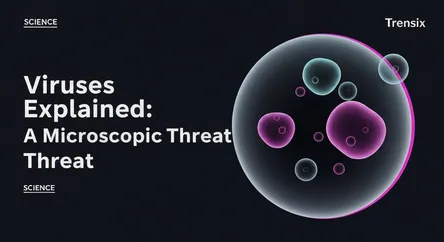Science
Viruses Explained: A Microscopic Threat

An essential guide to viruses. Learn what these microscopic agents are, why they cause global trends, and how they impact human health and society.
What is it?
A virus is a submicroscopic infectious agent that consists of a piece of genetic material, either DNA or RNA, enclosed in a protective protein coat called a capsid. Viruses are not made of cells and cannot replicate on their own; they are entirely dependent on the cells of a living host—such as humans, animals, or plants—to reproduce. They invade a host cell and hijack its machinery to make numerous copies of themselves, often destroying the host cell in the process. This unique life cycle places them in a gray area between living and nonliving entities.
Why is it trending?
Viruses are a constant trending topic due to their significant threat to public health. The emergence and rapid spread of new viruses, like those causing COVID-19 or Ebola, can lead to global pandemics with severe social and economic consequences. RNA viruses, in particular, have high mutation rates, allowing them to evolve quickly and adapt to new hosts or evade immune responses. Continuous media coverage of outbreaks, vaccine development, and scientific research keeps viruses at the forefront of public and scientific discussion.
How does it affect people?
Viruses affect people primarily by causing a wide range of diseases, from mild illnesses like the common cold to life-threatening conditions such as AIDS, influenza, and COVID-19. Viral infections are a leading cause of sickness and mortality globally. Large-scale outbreaks can overwhelm healthcare systems and necessitate public health measures like vaccination campaigns and quarantines. Beyond disease, viruses have also become powerful tools in scientific research and medicine, including in the development of gene therapies and new vaccines.